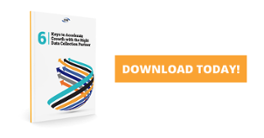
Is Your Data Collection Plan Missing This One Critical Thing?

Research and data collection is usually a fully collaborative effort. Just as with any type of collaboration, there is the chance for errors, misunderstandings, confusion and even chaos.
Study teams can mitigate these potential risks while taking full advantage of their research’s collaborative nature by holding a robust orientation/briefing session that takes place well before data collection even begins. In fact, the moment you are forming a data collection plan is the perfect opportunity to ensure that every team member is on the same page.
This critical step — confirming the policies, parameters and guidelines among all team members before data collection — is often overlooked. But when teams take the time to perform it, they can achieve higher-quality, more accurate data that is repeatable and reproducible.
Starting with Your Data Collection Plan
You are likely familiar with how a prototypical data collection plan is structured, but, just to recap, the main elements are as follows:
- A description of the project in brief
- The type of data being collected
- The rationale behind collecting the data and the collection method
- The method of data collection
- The anticipated insight that the data could reveal
- The intended use of the data
Noting Critical Factors
The two bullets highlighted in bold above emphasize critical sources of misunderstanding amongst team members. First, explaining the rationale behind the data collection plan can help guide decision-making in the act of data recording while also giving team members an operative “mode” of thought that can govern their approach to the study in general.
Looking at the second bullet, the methodology description for data collection will likely be lengthy and complex when examined in detail, but one critical element to highlight now is how team members will handle “cusp” values during collection. For instance, if you will be applying numerical values to qualitative observations, explicitly state how one would decide upon one value over the other. For instance, regarding “subject enjoyment” values between one and five, what is the test between a four and a five? If researchers are unsure, should they err towards the lower or higher number? This line of thought can help quantitative values, too, since not every number obtained will necessarily be a discrete integer in all instances.
Agreeing on how to handle cusp values will provide the heuristics needed for every team member to collect data in the same way. Otherwise, two members would score the exact same observations differently.
Test, Confirm and Debrief
Having every team member seemingly in agreement is not enough. Provide test instances to ensure repeatability and reproducibility among team members. Correct erroneous behaviors. After collection sessions have occurred, review behaviors with a debrief to see if policies are being followed. This type of diligence can prevent teams from having to scrap pages of data simply because team members had different ideas of how to record their observations.
Get Even Smarter About Field Data Collection
Having a solid data collection plan and clear discussions on methodology is a great start, but it is not everything. Ensure that your research team is following best practices from start to finish by reading our free guide to working with a market research field data collection partner.



